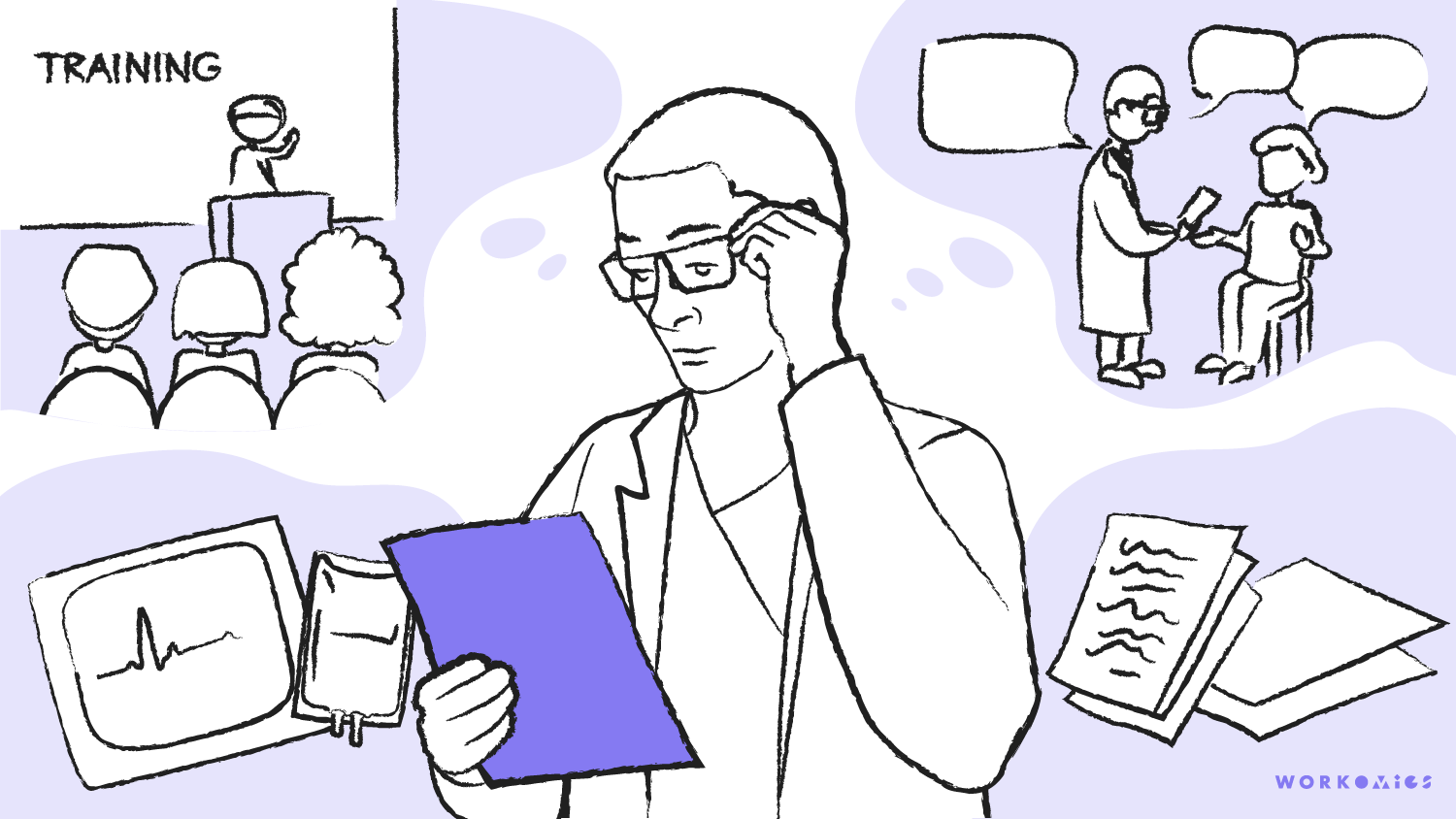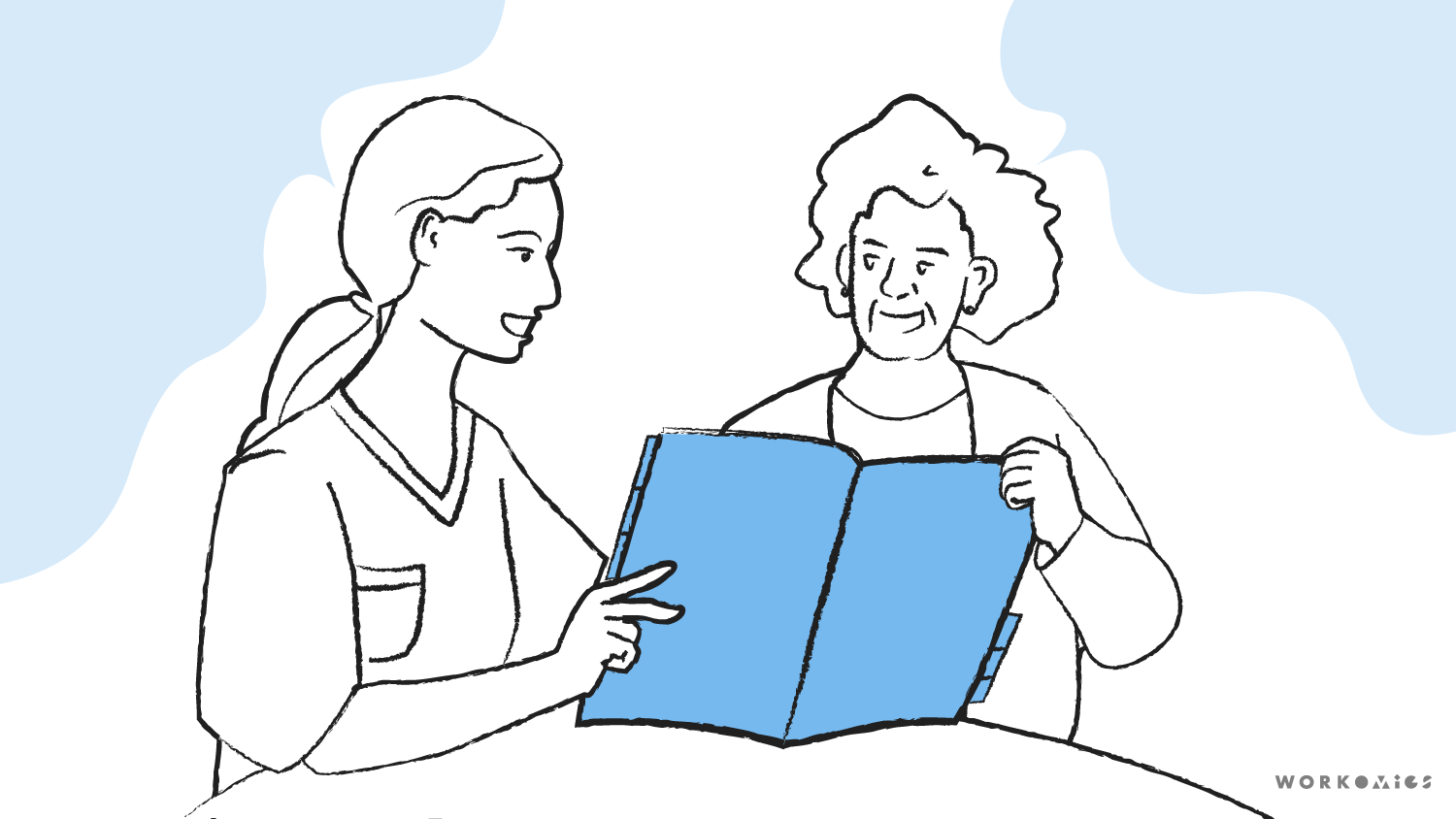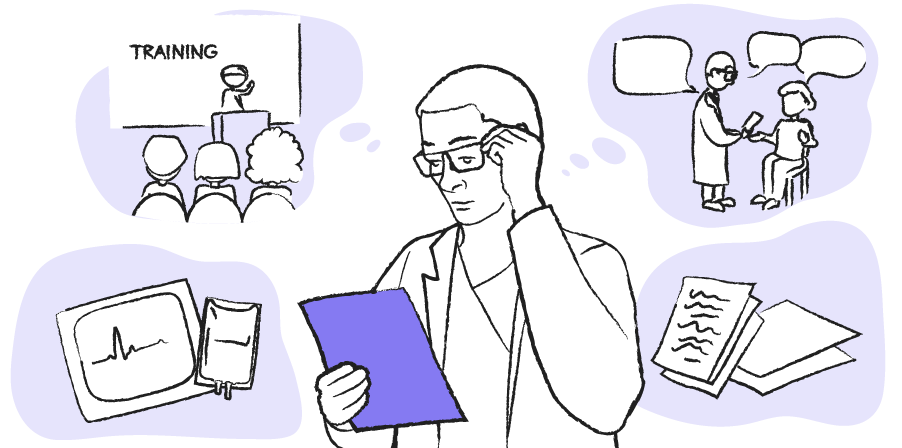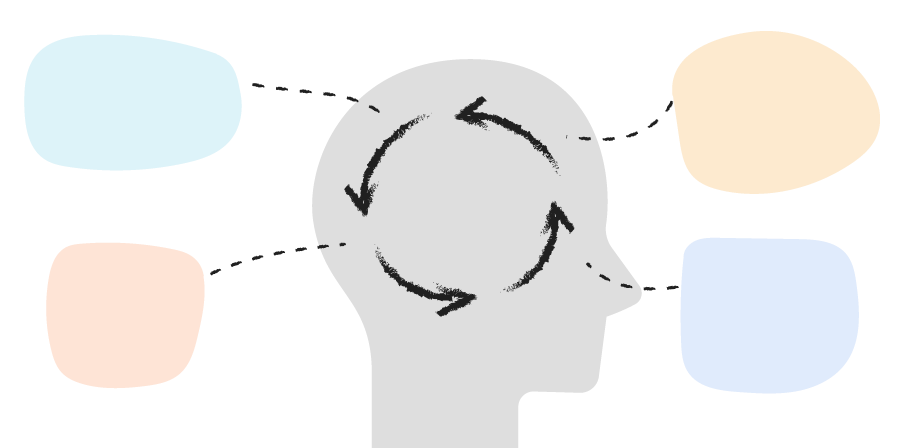Pharmaceutical manufacturers spend a significant amount of time and effort designing promotional materials, programs, and services to support doctors in prescribing their products. Classic communication topics of focus include mechanism of action (MOA), clinical trial results, and treatment process. However well-intentioned these communications may be, they exist against a historical backdrop of unethical marketing practices, and are often still viewed with a lack-of-trust by prescribers, who don’t want to be seen as being biased towards any particular drug or manufacturer.
As a result, the modern healthcare landscape is full of institutional barriers for using direct-from-manufacturer communications, which often prominently feature product logos and promotional messaging. While HCPs have an understandable preference for educational materials created by hospital systems and non-profit organizations, there is nonetheless an opportunity for Pharma to reach more providers with their materials.

For over a decade, our team has navigated these challenges to design communication materials that support HCPs in their roles. What we’ve captured below are best practices in developing pharma and life sciences communication materials to be used by HCPs. These are based on biomedical communications expertise and industry experience developing these materials alongside pharma partners. These best practices can lead to more effective pharma HCP marketing materials which, by extension, can positively affect the delivery of patient care.
Best practice #1: HCPs are busy—respect their time and don’t make them dig for important information
In addition to an ever-increasing patient load, HCPs must stay up to date on their training, be in constant communication with multiple stakeholders in the healthcare system, and manage their own internal systems. With audience attention so often diverted to these more pressing issues, bulky pharma communication materials risk being ignored completely.
Given their limited time, grab HCP attention by:
- prioritizing quality of information over quantity of content, and focusing on data and practical information over promotional messaging that doesn’t add to the audience’s understanding of the product
- using visual hierarchy to emphasize key takeaways and immediately catching readers attention with the most relevant information
- building emotional engagement with the content by including real patient stories and experiences
- highlighting information about side effects to demonstrate trustworthiness
- partnering with trusted medical centers and advocacy organizations to ensure key information is being effectively delivered through channels that HCPs already use
Best practice #2: HCP education is not one-size-fits-all
Pharmaceutical manufacturers tend to make HCP-facing promotional materials for a narrow prescriber audience. They often overlook the wide variety of HCP and allied HCP roles that are critical to treatment delivery including nurses, pharmacists, and social workers. Each of these roles focuses on a different aspect of patient care and communications, and these HCPs often vary in their educational needs.
Tailor educational materials for these important HCP audiences by:
- designing for versatility with smaller, stand-alone modules of content that can be digested sequentially over time. Nurses, for example, tend to learn in short bursts during limited windows of downtime.
- providing some educational materials and programs that don’t go too in depth on the clinical outcomes of a drug, and focus instead on practical aspects such as treatment process, administration, and side effect management. Nurses, pharmacists, and social workers, for example, don’t need to make treatment decisions but they do need a base of knowledge that can be directly applied to educating and supporting patients.
- leveraging digital channels to reach a wider audience. For example, HCPs in community-based generalist practices see a wide variety of patients and have little need for an abundance of printed materials about a specialized product for a single disease. However, a greater focus on digital materials for these HCPs could build awareness and allow them to access more information if and when they need it.
- partnering with various professional organizations to offer Continuing Medical Education (CME) credits for all HCPs attending educational programs or in-services.
Best practice #3: Think beyond HCP education
Applying a systems thinking lens to the challenge of building effective HCP communications can help us consider the broader context in which different HCPs operate, the different interactions they have, and where they may benefit from extra support. Many HCP roles have a significant amount of face-to-face time with patients, and can have a significant impact on patient experience and treatment success. With an ever increasing workload in the modern healthcare landscape, many HCPs are increasingly looking to pharmaceutical manufacturers to support them in educating their patients.
There is an important value, then, in communication strategies that address not only HCP comprehension and understanding of key topics, but also support the important conversations that HCPs have with patients on a daily basis. As they wear many hats spanning patient care and patient education, we have worked extensively with Nurses in the past to develop resources and tools that take creative approaches to spanning this gap.
Create resources that meaningfully support HCP-patient interactions by:
- creating purpose-built teaching tool resources that cover the important topics a patient needs to know, and that can be kept by the patient after the consult. This may look like a pad of tear sheets, for example. Resources like this may be extra useful for the increasing number of medical clinics looking to implement more structure and reporting around the delivery of patient education.
- designing flexibility into these teaching tools so they can work with a variety of different HCP teaching styles and patient learning styles. This may include different depths of information and ample space for HCPs to add notes and sketches during consultations with the patients.
- using analogies to help patients grasp complicated concepts about how a treatment works. Analogies are especially good for people with lower health literacy, or for explaining treatments to a pediatric audience. They can also be useful for any patients and caregivers who will inevitably need to go on to explain their treatment to friends and family members. The most effective analogies relate medical concepts to a simple and common topic from everyday life that isn’t polarizing. (For example, analogies about dogs or cats can be surprisingly polarizing due to strong personal preferences and differing life experiences.)
- creating educational content that is not product-specific, and instead stays at the level of disease state or treatment class. In many circumstances, this approach can cover a wide range of important topics and it’s appropriate for a wider range of patients, who may or may not yet be at the point of considering a specific drug or treatment.

Although we cannot solve all of the challenges faced by direct-to-practitioner pharmaceutical resources, we’ve outlined some opportunities for thinking outside the box and delivering HCP-facing communication strategies that are more focused, trustworthy, and multipurpose. Educational resources and services that are truly useful have value in the modern clinical setting—even if they are sponsored or created by pharmaceutical manufacturers—and stand a better chance of reaching a wider variety of HCPs. Most importantly for all stakeholders, HCPs that feel confident in their own knowledge base, and well equipped to inform their patients, can have a powerfully positive effect on patients and their healthcare experience.
Our other ideas worth exploring
Treatment Decision-Making: A Framework
Commercial pharmaceutical teams should examine an array of factors that shape treatment decision-making to influence prescribing behaviour.


